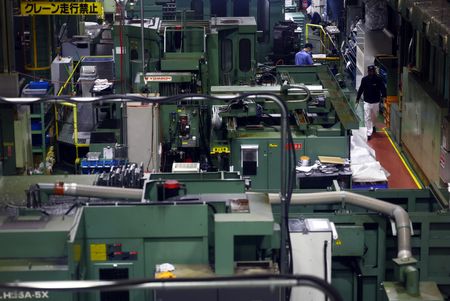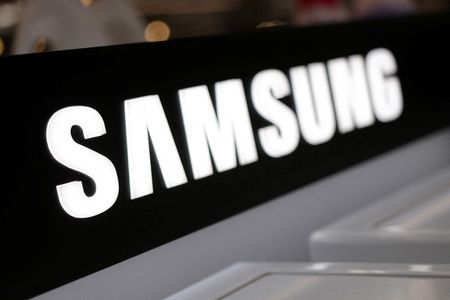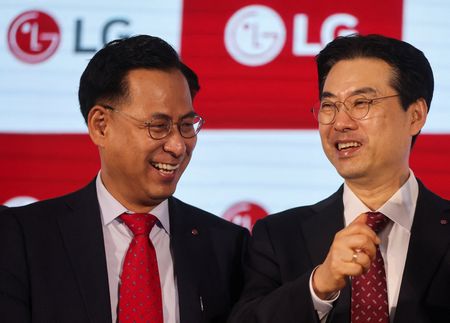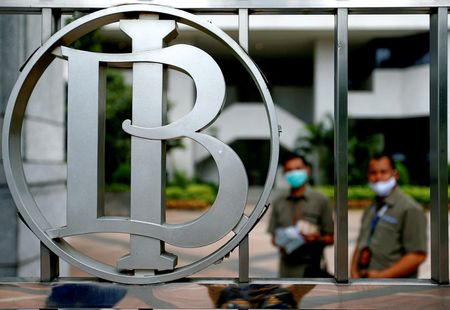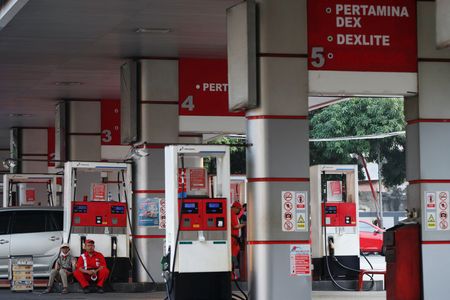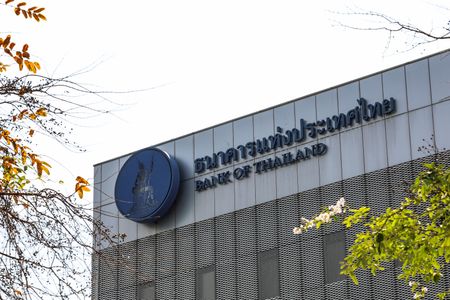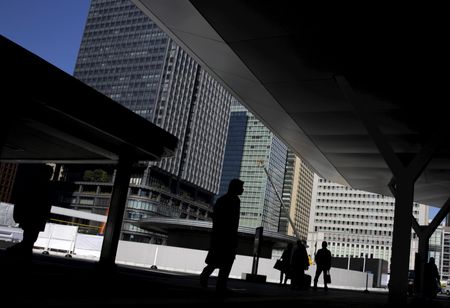By Jonathan Cable and Leika Kihara
LONDON/TOKYO (Reuters) -Factory activity shrank in much of the world last month, private surveys showed on Wednesday, as signs of a slowdown in U.S. growth and the anticipated impact of President Donald Trump’s tariffs added to pressure from weak Chinese demand.
Euro zone manufacturing slipped back into contraction as new orders fell at their fastest rate in six months, with export markets acting as a particular drag, signalling that the recovery in the region’s industrial sector was fragile.
The HCOB Eurozone Manufacturing Purchasing Managers’ Index (PMI), compiled by S&P Global, fell to 49.8 in September from August’s 50.7, which was the first reading above the 50.0-point line denoting growth since mid-2022.
“The drop in the PMI is showing up across the board, with respective figures for consumer goods, capital goods and intermediate goods all down on the month,” said Cyrus de la Rubia, chief economist at Hamburg Commercial Bank.
Surveys revealed a split across the currency union with the Netherlands leading the expansion with activity at a 38-month high while growth continued in Greece, Ireland and Spain. Meanwhile, the bloc’s three largest economies – Germany, France and Italy – all registered contractions.
In Britain, outside the European Union, activity shrank at the fastest pace in five months, reflecting subdued domestic demand and fewer export orders, painting a more downbeat picture than recent official data.
In Asia, the stress on manufacturers highlights the challenge policymakers face in protecting their export-reliant region from higher U.S. levies, a key policy of the Trump administration that has upended the global trade order and put the brakes on economic growth.
Export powerhouse Japan and global tech hub Taiwan saw manufacturing activity shrink in September, the surveys showed, leaving businesses in Asia – heavily dependent on the U.S. market – on a fragile footing.
Worryingly, China, a key engine of the global economy, also remained in the doldrums.
An official survey released on Monday showed manufacturing activity in the world’s second-biggest economy contracted for a sixth month in September, dragged down by weak consumption and the squeeze from U.S. tariffs.
The prolonged slump underlines the twin pressures on China’s economy: Domestic demand has failed to mount a durable recovery in the years since the coronavirus pandemic, while Trump’s tariffs have squeezed Chinese factories as well as overseas firms that buy components.
“The September PMI readings for most countries in Asia remained weak and we continue to expect manufacturing activity in the region to struggle in the near term,” said Shivaan Tandon, emerging markets economist at Capital Economics.
“With growth set to soften and inflation likely to remain contained, we expect central banks in Asia to loosen policy further.”
The S&P Global Japan Manufacturing PMI fell to 48.5 in September from 49.7 in August, staying below the 50.0 threshold. It shrank at the fastest pace in six months due to steep falls in output and new orders, the survey showed.
Taiwan’s manufacturing PMI fell to 46.8 last month. Factory activity also shrank in the Philippines and Malaysia, the private surveys showed.
By contrast, South Korea’s factory activity expanded for the first time in eight months underpinned by improving overseas demand. The manufacturing PMI in Asia’s fourth-largest economy, released by S&P Global, rose to 50.7 in September, moving above the 50-mark for the first time since January 2025.
The outlook for South Korea’s exporters, however, hinges on negotiations to formalise a July deal aimed at reducing U.S. tariffs on Korean goods imports including automobiles to 15% from 25% in return for South Korea’s investment of $350 billion in the U.S. The talks have stalled due to Seoul’s concerns over foreign exchange implications.
India’s manufacturing sector expansion lost some momentum and slipped to its weakest pace in four months, suggesting Washington’s punitive 50% tariffs on its goods could be starting to hurt Asia’s third-largest economy.
(Reporting by Jonathan Cable and Leika Kihara; Editing by Hugh Lawson, Shri Navaratnam and Lincoln Feast)

